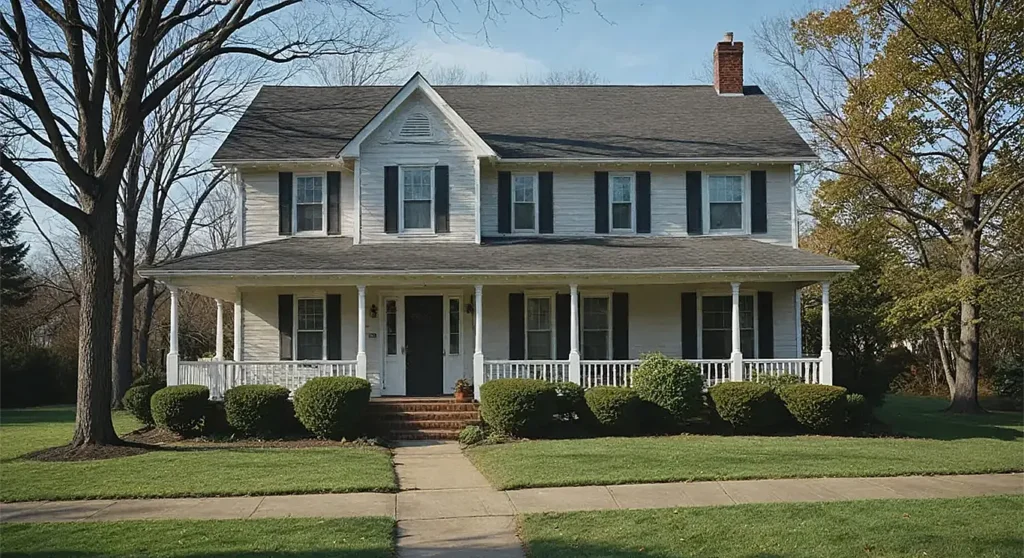
What Is a Reverse Mortgage for Purchase and How Does It Work?
Understanding Reverse Mortgage for Purchase
A Reverse Mortgage for Purchase (also known as a Home Equity Conversion Mortgage for Purchase or HECM for Purchase) is a financial tool that allows senior homeowners aged 62 and older to buy a new home using a reverse mortgage. Unlike traditional home loans, this program helps seniors purchase a new primary residence without the burden of monthly mortgage payments, as long as they meet loan obligations such as property taxes, homeowner’s insurance, and home maintenance.
This program is beneficial for seniors looking to relocate, downsize, or move closer to family while preserving cash flow. Instead of paying the entire home price upfront or taking out a conventional mortgage with monthly payments, a reverse mortgage for purchase allows seniors to finance part of the home cost using their home equity.
How Does a Reverse Mortgage for Purchase Work?
The process of obtaining a reverse mortgage for purchase is straightforward but requires understanding key elements:
- Eligibility Requirements: The borrower must be at least 62 years old, use the purchased home as their primary residence, and meet financial eligibility criteria set by the Federal Housing Administration (FHA).
- Down Payment Requirement: Unlike traditional mortgages, a significant down payment is required—typically around 45% to 62% of the home’s purchase price. The exact percentage depends on the borrower’s age, prevailing interest rates, and the home’s value.
- Funding the Remaining Amount: The rest of the purchase price is covered through the reverse mortgage loan. This means the homeowner does not have to make monthly payments as long as they comply with loan requirements.
- Loan Repayment: The loan balance is repaid when the homeowner sells the house, moves out permanently, or passes away. The heirs can either sell the home to settle the loan or refinance it if they wish to keep the property.
- Property Types: Eligible properties include single-family homes, FHA-approved condominiums, and some manufactured homes that meet FHA requirements.
Benefits of Using a Reverse Mortgage for Purchase
Choosing a reverse mortgage for purchase offers multiple advantages for seniors:
- No Monthly Mortgage Payments: Unlike a conventional mortgage, borrowers are not required to make monthly principal or interest payments, reducing financial strain.
- Preserve Retirement Savings: Seniors can use their savings for other expenses instead of tying up cash in home equity.
- Flexibility to Relocate: It provides an opportunity to move closer to family, into a more suitable home, or a lower-maintenance property.
- Non-Recourse Loan: The borrower or their heirs will never owe more than the home’s market value, even if the loan balance exceeds the property’s worth.
Reverse Mortgage for Purchase vs. Traditional Mortgage
While a traditional mortgage allows homeowners to finance a home with monthly payments, a reverse mortgage for purchase eliminates this requirement. Here’s how they compare:
|
Feature |
Reverse Mortgage for Purchase |
Traditional Mortgage |
|
Monthly Payments |
No required monthly payments |
Requires monthly payments |
|
Age Requirement |
62 and older |
No age restriction |
|
Down Payment |
Higher initial down payment |
Lower initial down payment |
|
Loan Repayment |
Upon selling, moving, or passing away |
Continuous monthly payments until fully paid |
|
Credit & Income Requirements |
Less stringent |
More strict approval process |
Can You Refinance a Reverse Mortgage for Purchase?
Yes, homeowners who have obtained a reverse mortgage for purchase can later opt for a refinance reverse mortgage to secure better loan terms. Refinancing may be beneficial for:
- Lowering Interest Rates: If market conditions change, refinancing can reduce the interest rate, saving money in the long run.
- Accessing Additional Equity: Home appreciation may allow borrowers to access more equity for other expenses.
- Adding a Spouse to the Loan: If a spouse was not initially included, refinancing may allow them to be added for continued occupancy benefits.
Steps to Refinance a Reverse Mortgage
If you decide to refinance a reverse mortgage for purchase, follow these steps:
- Evaluate Your Needs: Determine if refinancing aligns with your financial goals.
- Check Eligibility: Ensure you meet lender and FHA requirements for reverse mortgage refinancing.
- Appraisal & Application: The home’s value must be appraised to assess eligibility for refinancing.
- Loan Approval & Closing: If approved, the new loan replaces the old reverse mortgage, and new terms apply.
Is a Reverse Mortgage for Purchase Right for You?
A Reverse Mortgage for Purchase is an excellent option for seniors who want to buy a home without monthly mortgage payments while utilizing their home equity efficiently. However, it’s important to assess your financial situation, future plans, and homeownership goals before committing to this type of mortgage.
If you’re considering this option, consult with a reverse mortgage specialist to determine if it’s the right solution for your retirement strategy. Additionally, for those who already have a reverse mortgage and seek better terms, a Refinance Reverse Mortgage could help optimize financial benefits.
By understanding how a reverse mortgage for purchase works, you can make an informed decision that aligns with your financial goals and retirement lifestyle.
Leave Your Comment